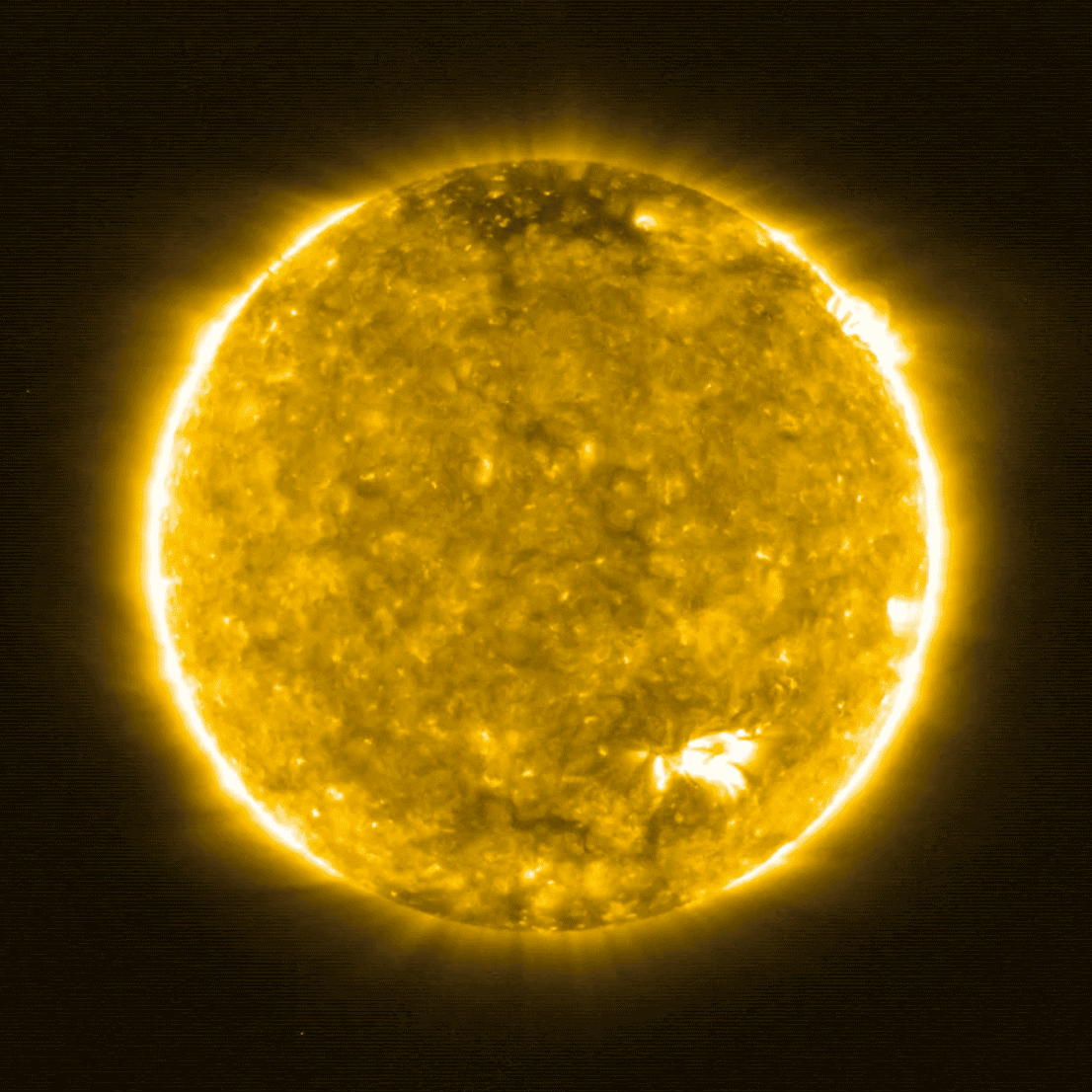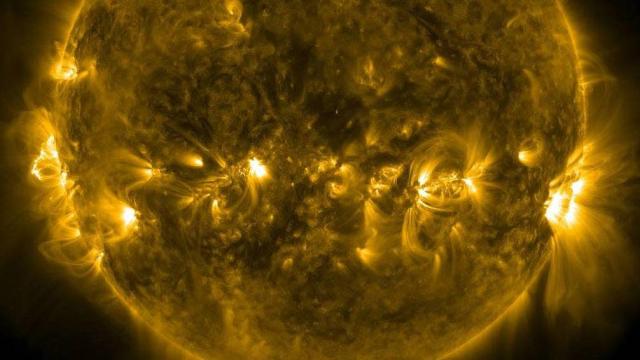Crackling away on a cosmic scale, small flares in the solar corona have been a matter of intrigue for researchers, as they are the brightest spots in a solar atmosphere boasting extraordinarily hot temperatures. Now, scientists propose that the little fires everywhere are caused by the convergence of magnetic fields kilometres above the Sun’s surface.
The flares were first spotted in 2020 by Solar Orbiter, the product of a collaboration between NASA and the European Space Agency and the first spacecraft to get close enough to the Sun with the technology to really see what’s going on. This February, on the first anniversary of its launch, the orbiter made it to the far side of the Sun. Now, two papers on the flares, nicknamed “campfires” for their relatively small size, have been accepted to be published in the journal Astronomy and Astrophysics. The papers chronicle 1,500 of these events in the solar atmosphere, seen by the Extreme-Ultraviolet Imager aboard the orbiter.
“The smallest, previously undetected flares occur much more frequently than the larger ones,” said Regina Aznar Cuadrado, a project manager at the Max Planck Institute for Solar System Research and one of the paper’s co-authors, in an institute press release. “It could be that their influence on coronal heating has been underestimated so far.”

The corona is 999,999 degrees Celsius, while the photosphere of the Sun (what we normally see with the naked eye) is a little under 5,500 degrees. Just why the corona gets so hot, and from where it summons the energy to sustain such temperatures, remains uncertain. “To evaluate what role the campfires really play, we first need to understand what physical processes are responsible for them,” said co-author Hardi Peters in the Max Planck release.
When seen in greater detail, the researchers found the campfires were looped, forming huge arcs of energy in the corona, reminiscent of the magnetic fields that manifest in the same region of the Sun. Hence the team’s chief observation: that most of the flares occur when two magnetic fields cross and interact. At that intersection, the team believes, enough energy may be released to superheat the solar plasma in the corona. It’s not just the number of flares that could contribute to the coronal temperature, either; it’s the individual energy contribution of each flare.
Solar Orbiter will make use of six total gravity assists on its trip toward the Sun, in which the spacecraft capitalises on the gravitational pull of nearby bodies to stay on course to its final destination. Only one such assist, using Venus, has already passed; the next is set to happen on August 8. The only Earth flyby will occur in late November, by which time Solar Orbiter will be fully operational and collecting more routine data for solar scientists to explore.
